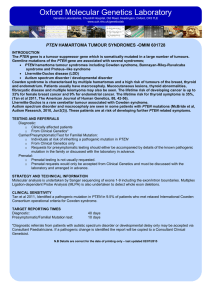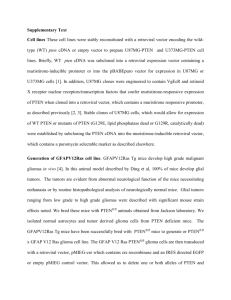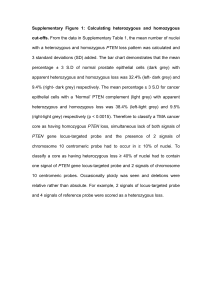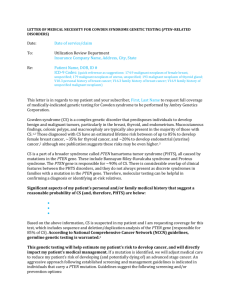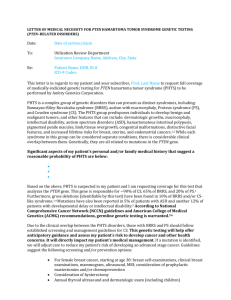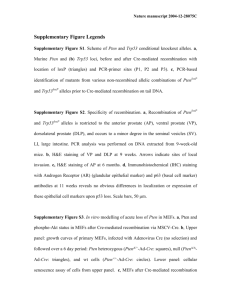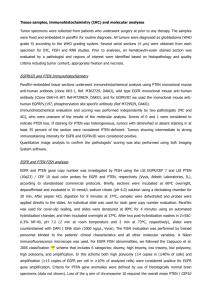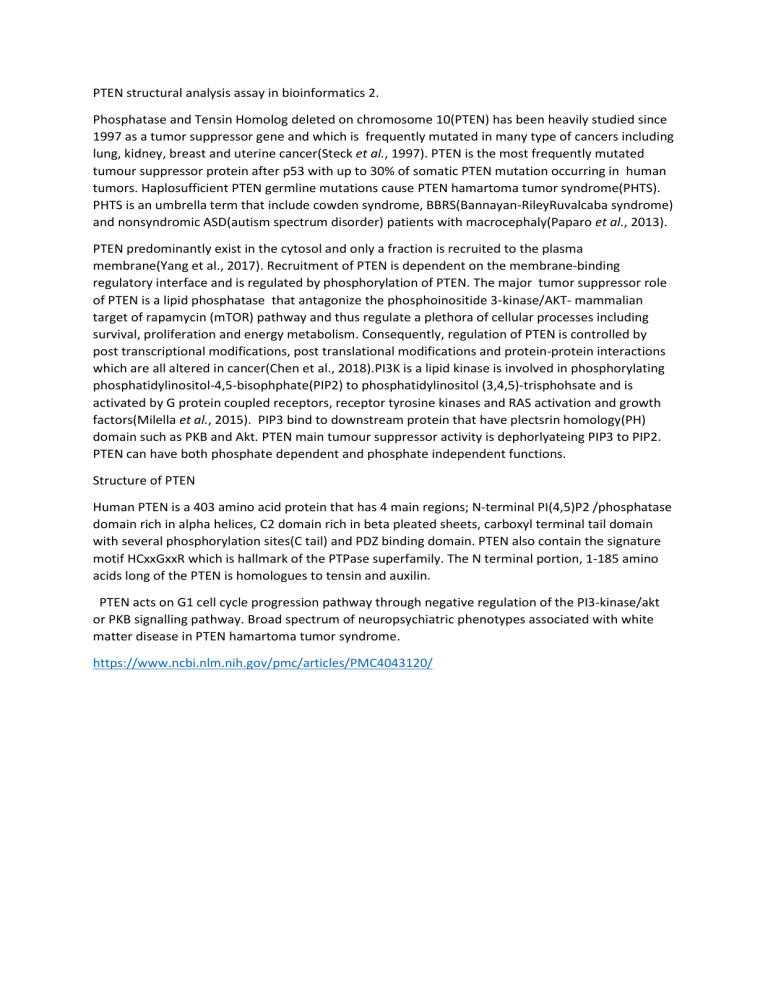
PTEN structural analysis assay in bioinformatics 2. Phosphatase and Tensin Homolog deleted on chromosome 10(PTEN) has been heavily studied since 1997 as a tumor suppressor gene and which is frequently mutated in many type of cancers including lung, kidney, breast and uterine cancer(Steck et al., 1997). PTEN is the most frequently mutated tumour suppressor protein after p53 with up to 30% of somatic PTEN mutation occurring in human tumors. Haplosufficient PTEN germline mutations cause PTEN hamartoma tumor syndrome(PHTS). PHTS is an umbrella term that include cowden syndrome, BBRS(Bannayan-RileyRuvalcaba syndrome) and nonsyndromic ASD(autism spectrum disorder) patients with macrocephaly(Paparo et al., 2013). PTEN predominantly exist in the cytosol and only a fraction is recruited to the plasma membrane(Yang et al., 2017). Recruitment of PTEN is dependent on the membrane-binding regulatory interface and is regulated by phosphorylation of PTEN. The major tumor suppressor role of PTEN is a lipid phosphatase that antagonize the phosphoinositide 3‑kinase/AKT- mammalian target of rapamycin (mTOR) pathway and thus regulate a plethora of cellular processes including survival, proliferation and energy metabolism. Consequently, regulation of PTEN is controlled by post transcriptional modifications, post translational modifications and protein-protein interactions which are all altered in cancer(Chen et al., 2018).PI3K is a lipid kinase is involved in phosphorylating phosphatidylinositol-4,5-bisophphate(PIP2) to phosphatidylinositol (3,4,5)-trisphohsate and is activated by G protein coupled receptors, receptor tyrosine kinases and RAS activation and growth factors(Milella et al., 2015). PIP3 bind to downstream protein that have plectsrin homology(PH) domain such as PKB and Akt. PTEN main tumour suppressor activity is dephorlyateing PIP3 to PIP2. PTEN can have both phosphate dependent and phosphate independent functions. Structure of PTEN Human PTEN is a 403 amino acid protein that has 4 main regions; N-terminal PI(4,5)P2 /phosphatase domain rich in alpha helices, C2 domain rich in beta pleated sheets, carboxyl terminal tail domain with several phosphorylation sites(C tail) and PDZ binding domain. PTEN also contain the signature motif HCxxGxxR which is hallmark of the PTPase superfamily. The N terminal portion, 1-185 amino acids long of the PTEN is homologues to tensin and auxilin. PTEN acts on G1 cell cycle progression pathway through negative regulation of the PI3-kinase/akt or PKB signalling pathway. Broad spectrum of neuropsychiatric phenotypes associated with white matter disease in PTEN hamartoma tumor syndrome. https://www.ncbi.nlm.nih.gov/pmc/articles/PMC4043120/
